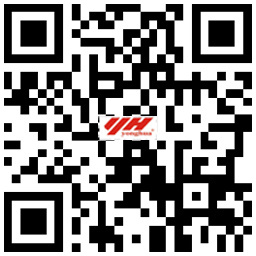
News Center
A company specializing in the production of power lines, RV lines, bicycles and electric vehicle pedals and other products of Jiande City enterprises
Which number is inside the triangle at the bottom of your bicycle kettle?
Release time:
2023-07-31 16:06
Bicycle kettle is mainly made of plastic, and its bottom is printed with a triangular mark, which is a symbol representing plastic recycling. The triangle box is marked with a number of 1 to 7, each number represents a different plastic, according to these recycling signs can understand which kind of resin is made of the kettle, if there are a variety of production components, it means that this is the main and basic material of the product. Your bicycle kettle at the bottom of the triangle is which number? Guangzhou Zane bicycle manufacturers to bring you a detailed introduction.
This logo comes from the United States. Now this marking method has been accepted and quoted by many countries, including our country. In our country, plastic products marked recycling mark is not mandatory, some formal big brand enterprises in order to facilitate the recycling of plastic products, have recently begun to mark the recycling mark. Although this logo is mainly to facilitate recycling, we can also use this logo to know what material the plastic products used are made of and under what circumstances they should be used.
This small recycling logo at the bottom of the plastic product is like a small ID card for each plastic container. They are made of different materials and used differently.
"01" --- PET (polyethylene terephthalate)
mineral water bottles and carbonated beverage bottles are made of this material. Beverage bottles can not be recycled to use hot water, this material is heat-resistant to 70 ℃, only suitable for warm or frozen drinks, high temperature liquid or heating is easy to deform, there are harmful substances dissolved. Moreover, scientists have found that this plastic product may release carcinogens after 10 months of use, which is toxic to the human body. Therefore, drink bottles, etc. should be thrown away when they are used up, and should not be used as water cups or as storage containers to hold other items, so as not to cause health problems.
"02" --- HDPE (High Density Polyethylene)
Plastic containers for cleaning products and bath products. Plastic bags currently used in supermarkets and shopping malls are mostly made of this material, which can withstand a high temperature of 110 ℃. Plastic bags marked with food can be used to contain food. Plastic containers containing cleaning products and bath products can be reused after careful cleaning, but these containers are usually not easy to clean, leaving the original cleaning products, becoming a hotbed of bacteria, cleaning is not complete, it is best not to recycle.
"03" --- PVC (polyvinyl chloride)
According to the introduction, the toxic and harmful substances easily produced by plastic products of this material come from two aspects, one is the monomolecular vinyl chloride that is not completely polymerized in the production process, and the other is the harmful substance in the plasticizer. These two substances are easy to precipitate when encountering high temperature and grease, and when toxic substances enter the human body with food, they are easy to cause cancer. At present, the container of this material has been less used for packaging food. If in use, do not let it heat.
"04" --- LDPE (low density polyethylene)
cling film, plastic film, etc. are all made of this material. Heat resistance is not strong. Generally, qualified PE cling film will melt when the temperature exceeds 110°C, leaving some plastic preparations that cannot be decomposed by the human body. In addition, the food is heated with plastic wrap, and the fat in the food can easily dissolve the harmful substances in the plastic wrap. Therefore, when food enters the microwave oven, the plastic wrap must be removed first.
"05" --- PP (polypropylene)
microwave oven lunch box is made of this material, which is resistant to high temperature of 130 ℃ and has poor transparency. This is the only plastic box that can be put into microwave oven and can be reused after careful cleaning. Special attention should be paid to the fact that some microwave oven lunch boxes are made of No. 05 PP, but the lid is made of No. 06 PS (polystyrene). PS has good transparency but is not resistant to high temperature, so it cannot be put into the microwave oven together with the box. To be on the safe side, remove the lid before putting the container in the microwave.
Related News


